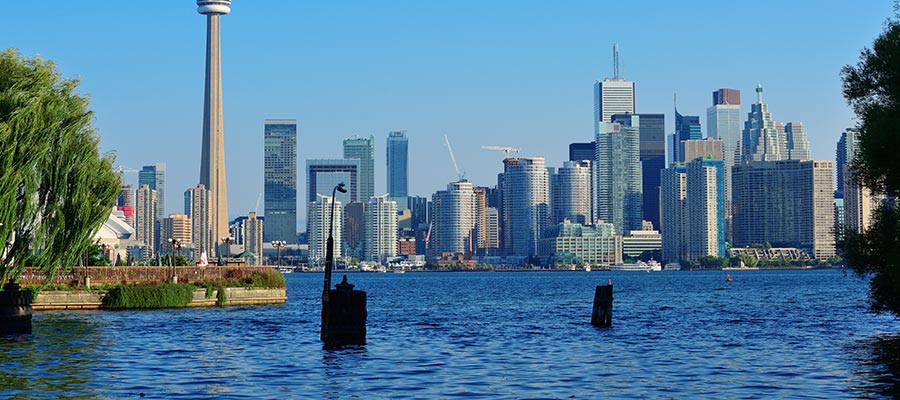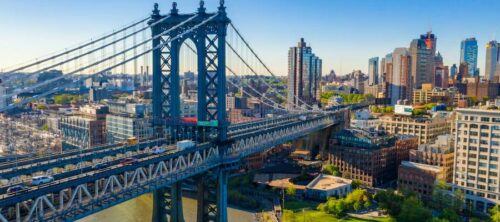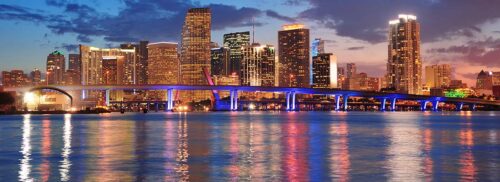Toronto consistently ranks among the world’s most livable cities due to its world-class education, robust job market, efficient public transit, and vibrant multicultural community. It offers world-class education, a strong job market, good public transit, and a vibrant multicultural community. From high-rise condos downtown to quiet family-oriented neighborhoods in the suburbs, the city has many different living options that draws individuals from all over the world seeking new opportunitiesopportunity and an improved quality of life.
But moving to Toronto comes with its own set of challenges. Knowing how the rental market operates, getting ready for high living expenses, understanding public transit, and adapting to Canada’s healthcare system are all essential steps. You will also need to set up banking services, build local credit, manage utilities, adapt to seasonal weather conditions, and access city services intended to assist newcomers.
This guide offers 15 essential practical tips to help you plan your move, avoid costly mistakes, and adjust quickly to life in one of Canada’s most dynamic cities.
15 Essential Tips for Living in Toronto
1. Choose Your Neighborhood Based on Needs and Budget
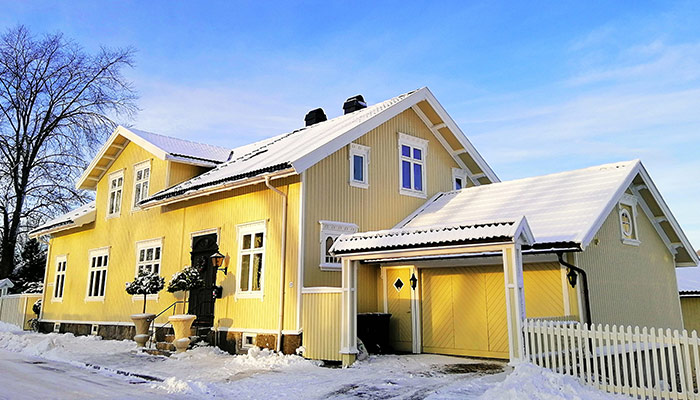
- Toronto is made up of vibrant neighborhoods with varying rental prices, lifestyles, and transit access.
- Young professionals may prefer centrally located areas like Downtown, King West, or Liberty Village.
- For Students, choose The Annex, Kensington Market, or areas near their universities.
- Families may look into peaceful and greener areas like High Park, Leaside, or East York.
- Suburban neighborhoods such as North York, Scarborough, and Etobicoke provide more spacious accommodations at comparatively lower rental rates, although they typically involve longer commute times.
2. Understand the Cost of Living in Toronto
Toronto is among the most expensive cities in Canada. Understanding core expenses will help you build a realistic monthly budget.
Estimated Monthly Living Costs (CAD)
| Expense Category | Estimated Monthly Cost (CAD) | Notes |
| 1-Bedroom Apartment (City Center) | $2,500–$3,000 | Lower in suburbs like East York or North York |
| Utilities (Electricity, Heat, Water) | $150–$250 | Varies based on usage and apartment size |
| Internet | $60–$100 | Most plans include installation & router |
| Mobile Phone Plan | $50–$90 | Data plans are pricier than in the U.S. |
| Public Transit (TTC Pass) | $156 | Monthly PRESTO pass for unlimited rides |
| Groceries (1 adult) | $400–$600 | Depends on diet and grocery store choice |
| Total (Individual Estimate) | $3,500–$4,500 | Varies by lifestyle and housing location |
3. Start Rental Search Early and Learn Local Rules

- Begin looking for housing 6–8 weeks before your intended move.
- Most landlords require the first and last month’s rent upfront.
- Canadian credit history is often required; as a newcomer, you may need to show proof of income or employment or offer a co-signer.
- Use trusted platforms like ViewIt, Rentals.ca, and PadMapper to find listings.
- To avoid rental scams, refrain from transferring funds prior to visiting the property in person and signing a legally binding lease agreement.
4. Apply for OHIP and Get Temporary Health Insurance
- Ontario’s public health insurance (OHIP) requires a 3-month waiting period after establishing residency.
- During this period, you should have private insurance that covers medical emergencies.
- Not all services are covered under OHIP (e.g., dental, vision, prescriptions), so additional private coverage may be necessary.
5. Apply for a Social Insurance Number (SIN)
- A SIN is mandatory for employment, filing taxes, and accessing government benefits.
- You can apply online or in person at a Service Canada office.
- Bring your work/study permit, passport, and proof of address.
6. Open a Canadian Bank Account Immediately

- Essential for receiving your salary, paying rent, and managing bills.
- Many banks offer newcomer packages with no monthly fees and easier credit card approvals.
- Required documents include a passport, immigration documents, and proof of address.
7. Start Building Your Canadian Credit History
- U.S. credit scores don’t transfer to Canada.
- Get a secured credit card or a newcomer credit product to start building credit.
- Use it regularly and pay on time to establish a good score, which helps with future rentals, loans, and phone contracts.
8. Learn How Public Transit Works in Toronto
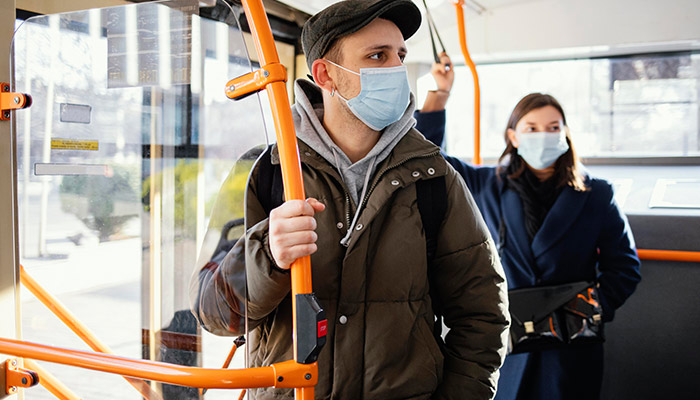
Toronto’s transit system is efficient and well-connected. Here’s what you need to know:
| Mode | Coverage Area | Use Case | Notes |
| Subway | Core and Midtown Toronto | Fastest option for long commutes | 4 lines; major hubs at Union, Bloor-Yonge |
| Streetcar | Downtown, waterfront, west end | Scenic, good for shorter distances | Runs in traffic; slower than subway |
| Bus | All across the city & suburbs | Feeds subway lines and covers outer areas | Useful during subway closures or off-hours |
| GO Transit | Greater Toronto Area | Commuting from Mississauga, Brampton, etc. | PRESTO card works across all systems |
- PRESTO cards are required for fare payment across all services.
- The monthly TTC pass (on PRESTO) is approximately $156 CAD.
- TTC coverage is excellent within the city; GO Transit connects suburbs and the GTA.
9. Convert Your U.S. Driver’s License (if you plan to drive)
- Americans can use their license in Ontario for 60 days.
- After that, you’ll need to exchange it for an Ontario license; in most cases, no testing is required.
- Insurance premiums are typically higher for new residents; it is advisable to compare multiple providers before selecting a policy.
10. Budget for One-Time and Monthly Utility Costs
- Rent may or may not include utilities, so check the lease details carefully.
- Basic utilities (electricity, heat, water) typically cost $150–$250 CAD/month.
- Internet and cell service are expensive compared to the U.S.; shop around for bundle deals.
11. Understand Local Laws and Community Norms

- Public consumption of alcohol and cannabis is only allowed in designated areas.
You can legally drink at:
- Licensed bars and restaurants
- Private residences
- Designated areas (if the city allows it, check signage)
- Smoking and vaping are banned in most public areas and parks.
- Recycling and composting are mandatory in residential buildings.
- Violations such as jaywalking, littering, and generating excessive noise may result in municipal fines.
12. Get Ready for Extreme Weather and Seasonal Shifts
- Winters can drop below -10°C (14°F), and snowstorms are common.
- It is recommended to invest in insulated, waterproof outerwear, appropriate footwear, gloves, and thermal clothing to manage winter conditions effectively.
- Summers are humid, with temperatures often above 25°C (77°F).
| Season | Months | Average Temperatures | Weather Characteristics | What to Prepare |
| Winter | December – February | -10°C to 0°C (14°F to 32°F) | Cold, snowy, icy conditions, occasional snowstorms | Insulated coat, boots, thermal layers, gloves |
| Spring | March – May | 5°C to 15°C (41°F to 59°F) | Unpredictable; mix of rain, sun, and lingering chill | Light jacket, waterproof shoes, umbrella |
| Summer | June – August | 20°C to 30°C (68°F to 86°F) | Warm to hot, humid, occasional thunderstorms | Light clothing, sunscreen, fan or A/C |
| Fall | September – November | 5°C to 18°C (41°F to 64°F) | Crisp air, changing leaves, gradual cooling | Jacket, sweaters, comfortable walking shoes |
13. Compare Cell Phone and Internet Providers
- Options include Bell, Rogers, Telus, Freedom Mobile, and Fido.
- Monthly phone plans range from $50–$90 CAD; data is limited.
- Internet plans cost $60–$100/month, depending on speed and provider.
14. Use City and Community Resources to Ease Your Transition
- The City of Toronto provides free support programs for newcomers, including employment help, English classes, and settlement guidance.
- Toronto Public Library, YMCA, and local community centers host workshops and cultural events.
- The Toronto Newcomer Office provides centralized support for newcomers, offering help with housing, employment, and legal services.
- Many programs are funded by the government and are free to access.
- COSTI Immigrant Services provides language instruction, job placement, and housing assistance.
15. Embrace Cultural Diversity and Social Opportunities

- Over half of Toronto’s population was born outside Canada.
- Explore neighborhoods like Greektown, Chinatown, Little Italy, and Koreatown.
- Join newcomer meetups, networking events, and expat groups to build social connections quickly.
- Meetup.com – For newcomer meetups, hobby groups, and professional networking.
- Harbourfront Centre – Hosts multicultural performances, workshops, and festivals.
Experience a Seamless Move—Trust Our Professional Movers!
Conclusion
Moving to Toronto comes with a lot to consider. Rent prices, transit options, weather, local laws, and the overall cost of living must be factored in when planning your move. These 15 tips are intended to provide a comprehensive overview of key considerations when relocating to Toronto, of what to expect and how to prepare.
Taking the time to research neighborhoods, understand your budget, and use local newcomer resources can make a big difference. If you’re thinking about relocating, this guide should help you decide if Toronto is the right fit for your lifestyle and needs and help you settle in more smoothly if you do make the move.
FAQs for Moving to Toronto
1. What should I know about preparing for winter in Toronto?
Toronto experiences prolonged and cold winters, with temperatures frequently falling below freezing and regular snowfall. It is essential to purchase insulated winter clothing and allow for additional travel time during inclement weather. Public transportation operates year-round but accommodates additional travel time during snowstorms or icy roads.
2. How do newcomers access healthcare services in Toronto?
New Ontarians are required to enroll in the Ontario Health Insurance Plan (OHIP) to qualify for public health care. A 3-month waiting period is compulsory, so private coverage is advisable during this time. Applications can be made at ServiceOntario locations using your immigration documents and residency proof.
3. What’s the process to open a bank account in Toronto as a new resident?
Most Canadian banks offer newcomer packages with no monthly fees and easy credit card access. To open an account, visit a branch with these documents like your passport, immigration papers (study/work permit or PR), and proof of address.
4. Are there free or low-cost programs for newcomers in Toronto?
Yes, Toronto has many free or subsidized newcomer services provided by organizations such as the Toronto Newcomer Office, YMCA Newcomer Information Centres, and COSTI Immigrant Services. You have access to language courses, job assistance, community activities, and orientation programs citywide.
5. How can I enroll my child in a public school in Toronto?
Children aged 4–18 are eligible to attend public school. For enrollment, contact the Toronto District School Board (TDSB) or Toronto Catholic District School Board (TCDSB), depending on your preference or location. For school enrollment, you need to submit documents that are proof of age, address, immigration status, and immunization records. Placement is typically based on your home address.


